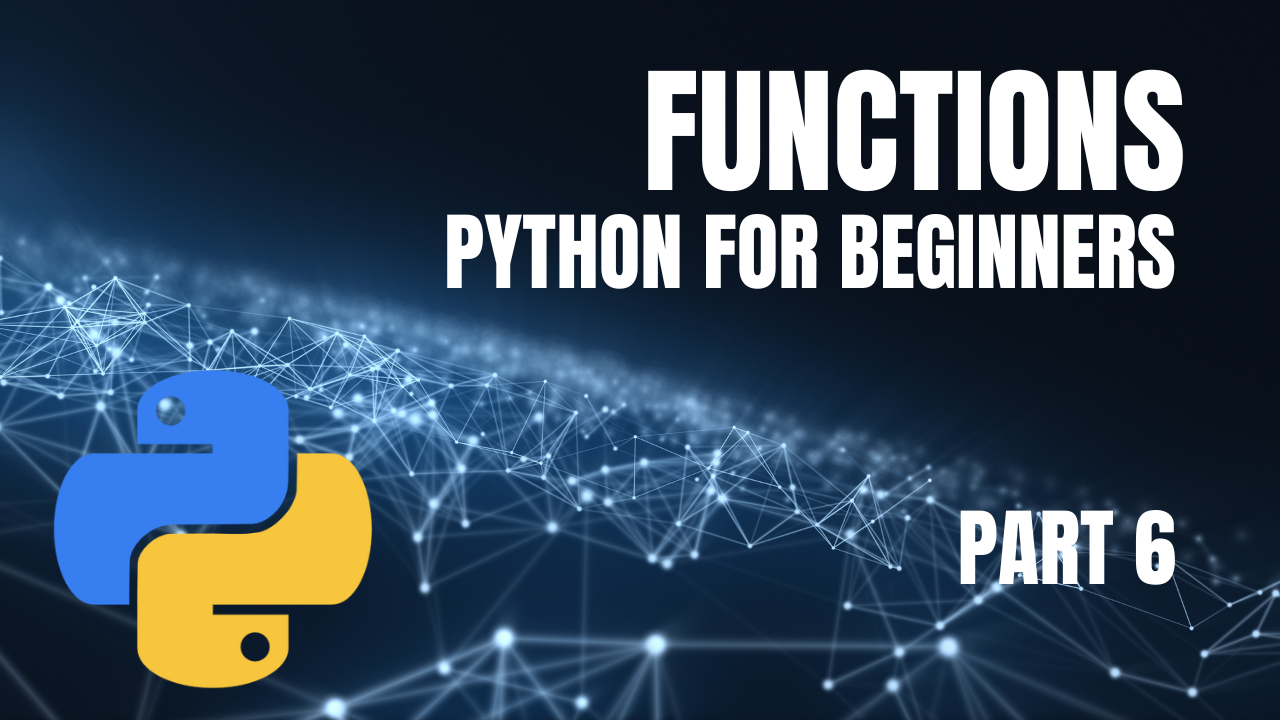Python for Beginners: Part 6 - Functions
 Matthew Hard
Matthew Hard
Welcome back, young coders! In our coding adventure, we often find ourselves repeating the same actions in our programs. Just like having a magical spellbook, functions in Python help us organize our code and perform tasks repeatedly. Get ready to unleash the power of functions and take your coding skills to the next level!
Understanding Functions
Functions are like little blocks of code that we can use and reuse to perform specific tasks. They allow us to break down our code into smaller, manageable pieces. Imagine having a collection of spells, each with a specific purpose, ready to be used whenever needed. That's the power of functions!
Creating Functions in Python
In Python, we create functions using the def keyword, followed by the function name and parentheses. Let's start with a simple example:
# Defining a function to greet
def greet():
print("Hello, young coder!")
# Calling the function
greet()
In this code, we define a function called greet() that prints a greeting message. To execute the code inside the function, we call the function by writing its name followed by parentheses.
Passing Information to Functions
Functions can also accept inputs, called parameters, which allow us to pass information to the function. This makes functions more flexible and versatile. Let's see an example:
# Defining a function to greet with a name
def greet_with_name(name):
print("Hello,", name, "!")
# Calling the function with a specific name
greet_with_name("Alice")
In this code, we define a function called greet_with_name() that takes a parameter called name. When we call the function and pass a name as an argument, it prints a personalized greeting.
Return Values
Functions can also return values, allowing us to get information back from the function. Here's an example:
# Defining a function to add two numbers
def add_numbers(a, b):
return a + b
# Calling the function and storing the result
result = add_numbers(5, 3)
print("The sum is:", result)
In this code, the add_numbers() function takes two parameters a and b, and returns their sum using the return keyword. We can store the result in a variable and use it later in our program.
Congratulations, young coders! You've learned about functions in Python and how they help us organize and reuse our code. We explored how to create functions, pass information to them using parameters, and even retrieve values using return statements.
Functions are like magical spells that make our code more modular, efficient, and powerful. In the next post, we'll put our knowledge to the test with exciting coding exercises!
Keep exploring, organizing, and coding like a wizard!
Subscribe to my newsletter
Read articles from Matthew Hard directly inside your inbox. Subscribe to the newsletter, and don't miss out.
Written by

Matthew Hard
Matthew Hard
I'm Matthew, a cybersecurity enthusiast, programmer, and networking specialist. With a lifelong passion for technology, I have dedicated my career to the world of cybersecurity, constantly expanding my knowledge and honing my skills. From a young age, I found myself captivated by the intricate workings of computers and networks. This fascination led me to pursue in-depth studies in the fields of networking and cybersecurity, where I delved deep into the fundamental principles and best practices. Join me on this exciting journey as we explore the multifaceted world of technology together. Whether you're a beginner or a seasoned professional, I am here to share my knowledge, discuss the latest trends, and engage in insightful discussions. Together, let's embrace the ever-changing world of tech and navigate the complexities of cybersecurity with confidence and expertise.